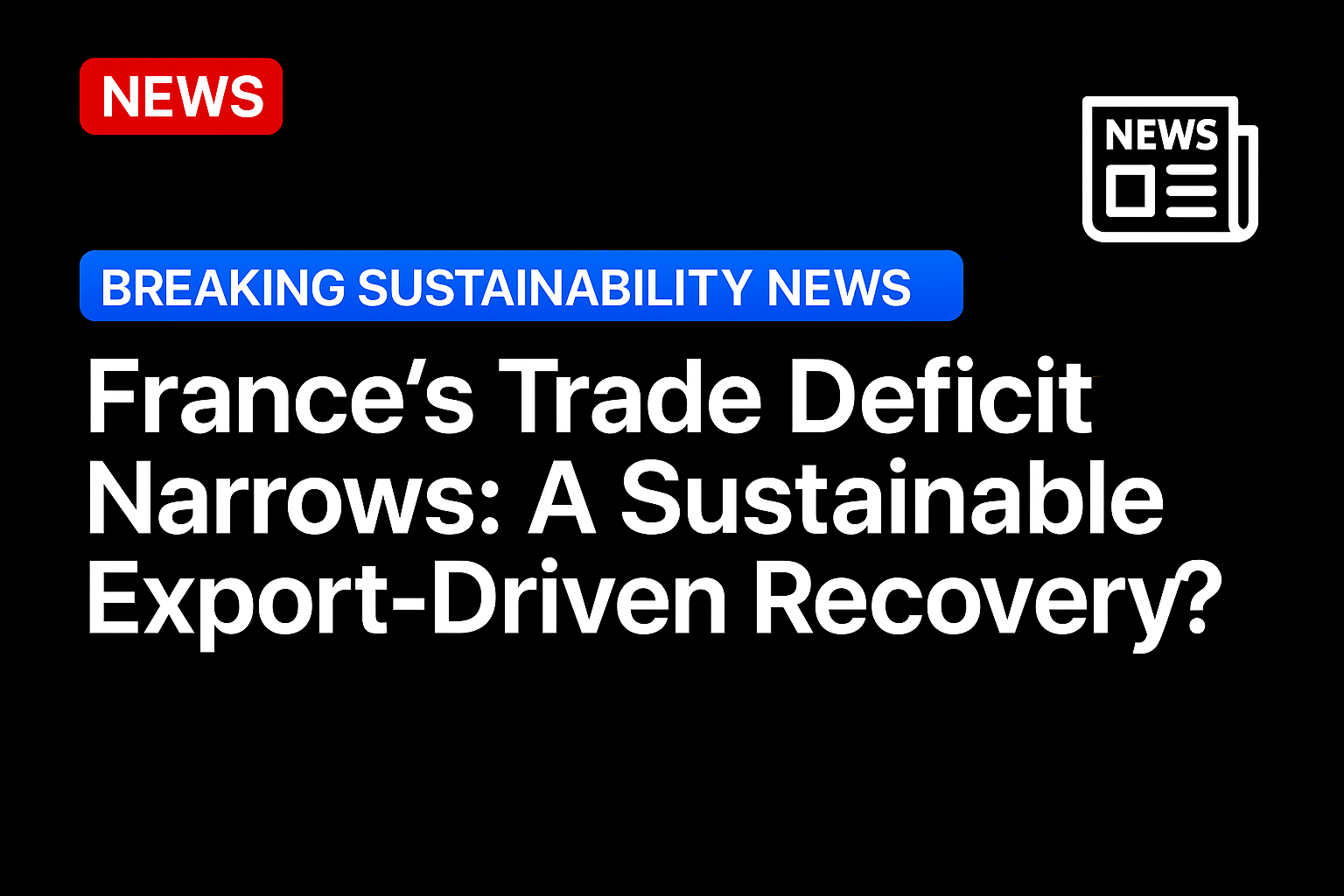France’s trade deficit in June 2024 remained at €7.1 billion, a stable figure compared to May 2024, but the underlying dynamics tell a more nuanced story. While the 12-month cumulative deficit narrowed by €1.1 billion to €85.1 billion, the second quarter of 2024 saw a €3 billion widening compared to Q1, driven largely by energy sector shifts. For investors, the key question is whether this export-driven recovery is sustainable, particularly as France navigates a transition to green energy and faces structural challenges in its manufacturing base.
Energy Exports: A Double-Edged Sword
France’s energy sector has emerged as a critical pillar of its trade balance. In June 2024, the energy balance narrowed by €0.2 billion, fueled by a 10% increase in nuclear power generation and record hydroelectric output. The return of nuclear reactors to full operation—after years of maintenance delays—and an unusually rainy spring created a surplus of electricity, which France exported to neighboring countries. In the first half of 2024, France exported 21.1 terawatt-hours (TWh) of electricity, with the UK importing 11.7 TWh alone.
This energy surplus has bolstered France’s trade balance, but sustainability concerns persist. The country’s reliance on nuclear power, while low-carbon, is vulnerable to operational disruptions. Additionally, periods of negative electricity prices forced France to curtail renewable generation (e.g., solar and wind) to manage oversupply, highlighting the fragility of its export model. Investors should monitor EDF’s (EPA:EDF) operational efficiency and the government’s nuclear modernization plans, as these will determine the sector’s long-term viability.
Manufacturing: Mixed Signals in a Green Transition
France’s manufacturing exports rose 1.1% in June 2024 to €152.7 billion, driven by strong performance in aviation and shipbuilding. The delivery of an ocean liner to the U.S. and robust sales in the aviation sector—where sustainable technologies are increasingly adopted—signal resilience. However, chemical product exports declined, reflecting global demand shifts and regulatory pressures toward greener alternatives.
The Green Industry Law, enacted in October 2023, aims to accelerate decarbonization in key sectors, offering tax incentives for green hydrogen, electric battery production, and nuclear energy. While these policies support long-term competitiveness, they also require significant capital investment. The France 2030 Plan further emphasizes innovation in clean energy and low-carbon technologies, including a target to produce two million electric and hybrid vehicles annually.
Yet, structural challenges remain. France’s intermediate goods deficit grew by €0.2 billion in June 2024, underscoring its reliance on imported raw materials and semi-finished products. This dependency exposes the economy to supply chain disruptions and geopolitical risks, particularly as global trade tensions persist. For investors, this highlights the need to differentiate between sectors: while energy and advanced manufacturing (e.g., aviation) show promise, traditional industries like chemicals may face headwinds.
Strategic Opportunities and Risks for Investors
The narrowing trade deficit and energy surplus present opportunities for investors in European equities and trade-sensitive assets. Key areas to consider include:
- Green Energy Infrastructure: Companies involved in nuclear power (e.g., EDF) and renewable energy (e.g., Nextera) are well-positioned to benefit from France’s energy export strategy. However, regulatory and operational risks—such as reactor maintenance delays—could impact returns.
- Advanced Manufacturing: Sectors like aviation and shipbuilding, which leverage sustainable technologies, offer growth potential. Investors should focus on firms with strong R&D pipelines and alignment with EU green initiatives.
- Supply Chain Resilience: The intermediate goods deficit underscores the importance of diversifying supply chains. Investors may favor companies investing in domestic production of critical materials or those with robust global sourcing strategies.
Conversely, risks include over-reliance on energy exports, which could be volatile if Europe’s demand for French electricity declines. Additionally, high financing costs and weak domestic demand may constrain business investment, limiting the broader economic impact of export gains.
Conclusion: A Cautious Optimism
France’s narrowing trade deficit reflects progress in its energy transition and manufacturing resilience. However, sustainability hinges on addressing structural weaknesses, such as intermediate goods dependency and sector-specific vulnerabilities. For investors, a balanced approach is key: overweighting green energy and advanced manufacturing while hedging against supply chain risks. As the EU’s green agenda gains momentum, France’s strategic position as a clean energy exporter could drive long-term value, but short-term volatility remains a factor.
In the coming months, investors should closely watch INSEE’s trade data, EDF’s operational updates, and the implementation of the France 2030 Plan. Those who align with the green transition and prioritize sectors with strong policy tailwinds may find compelling opportunities in France’s evolving economic landscape.
Source: https://www.ainvest.com/




